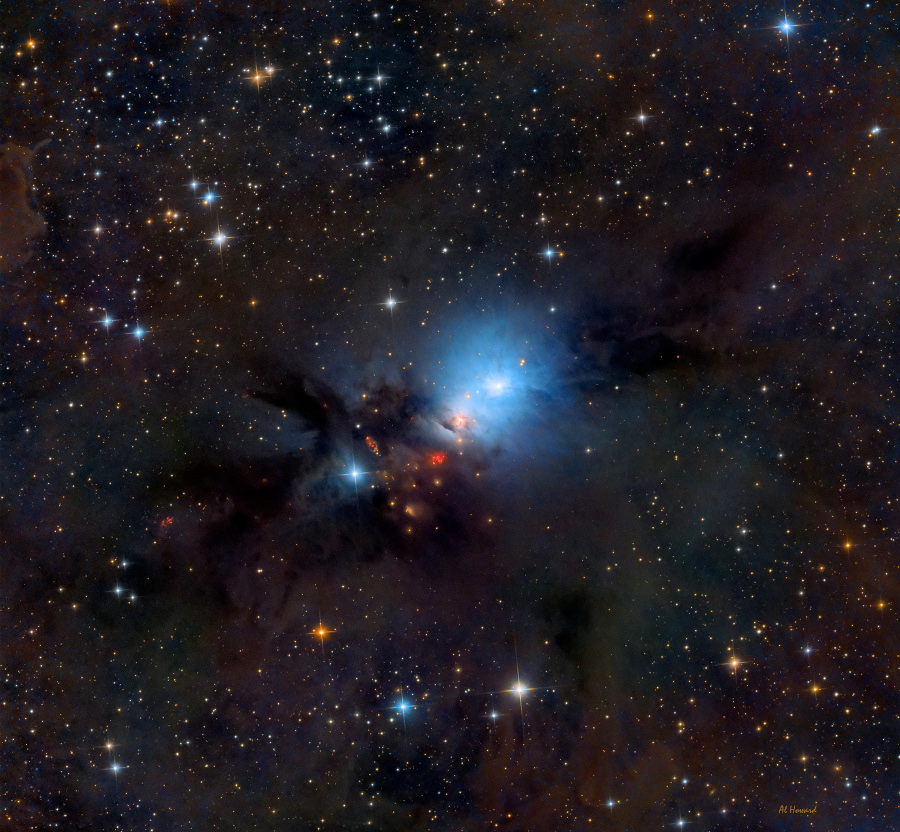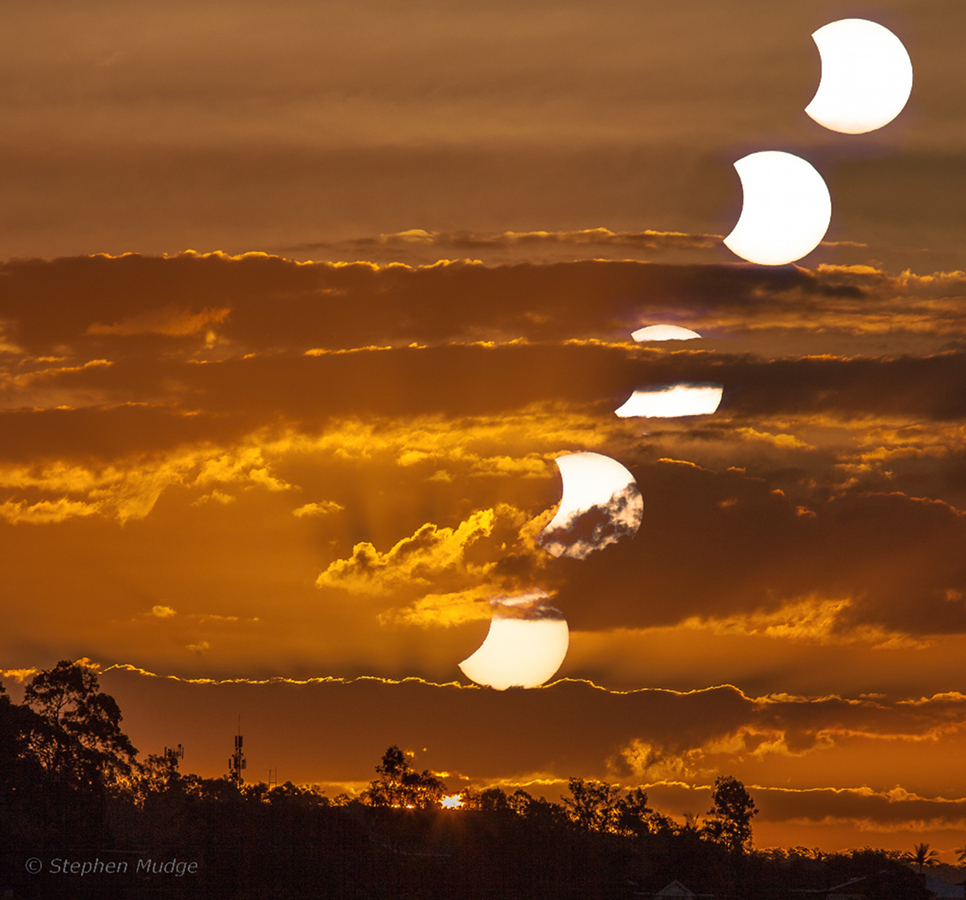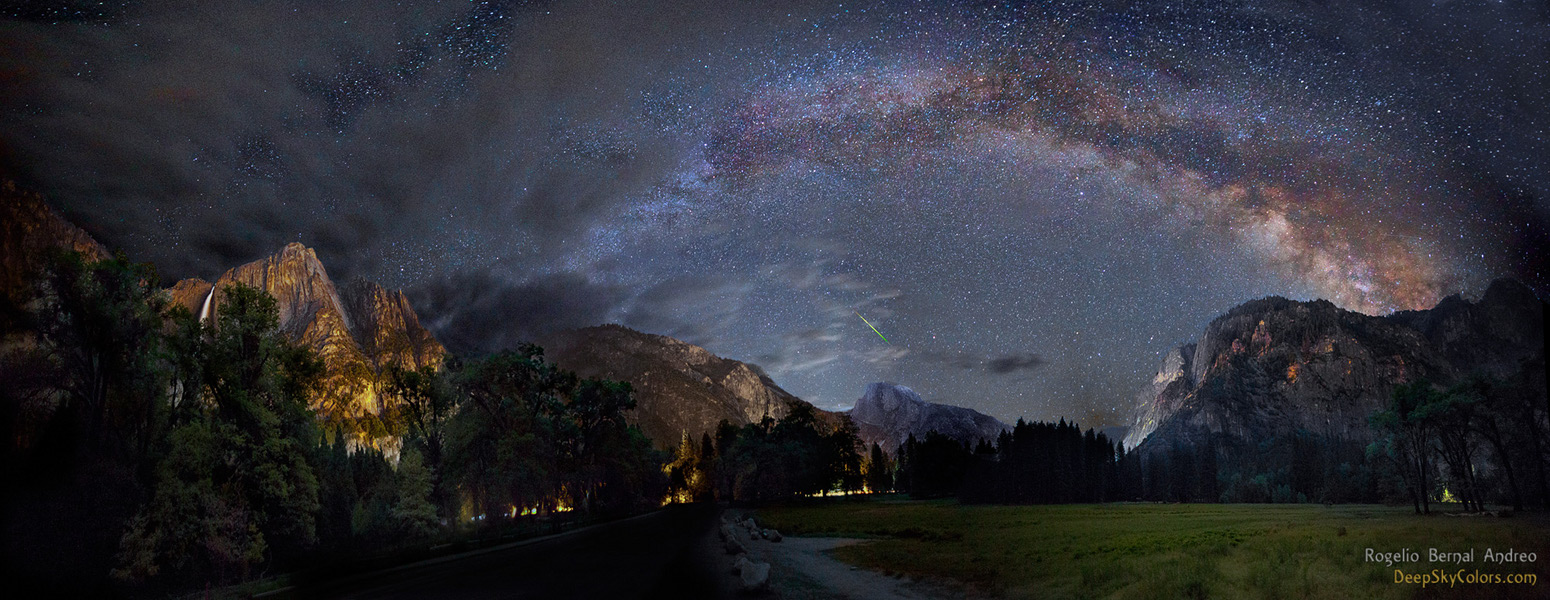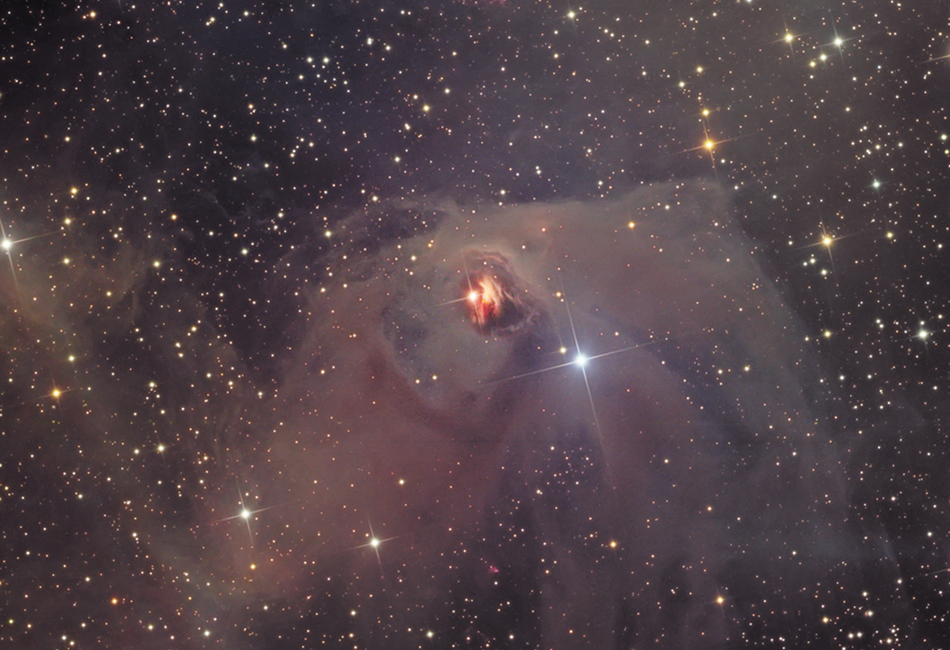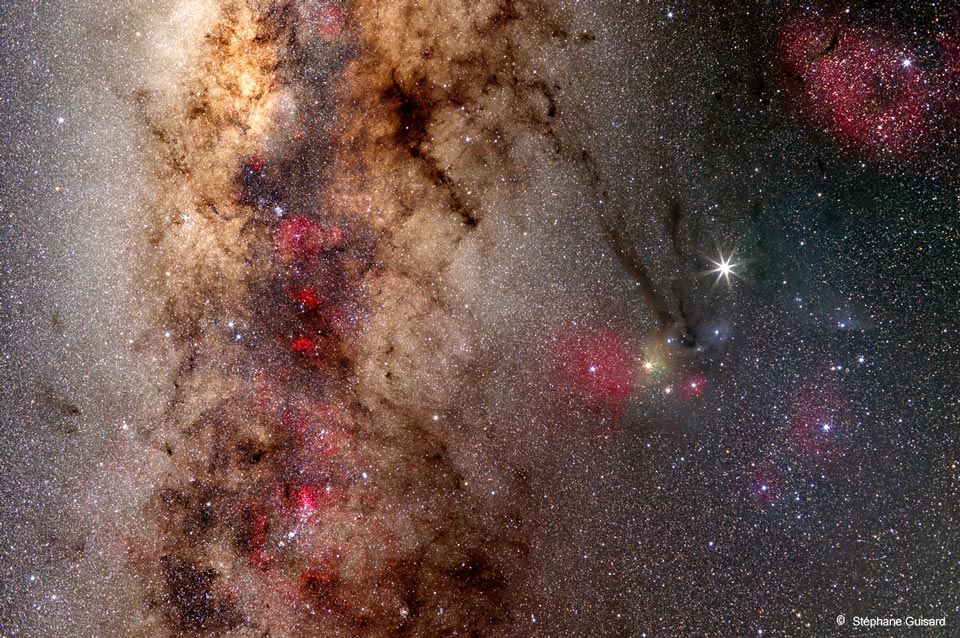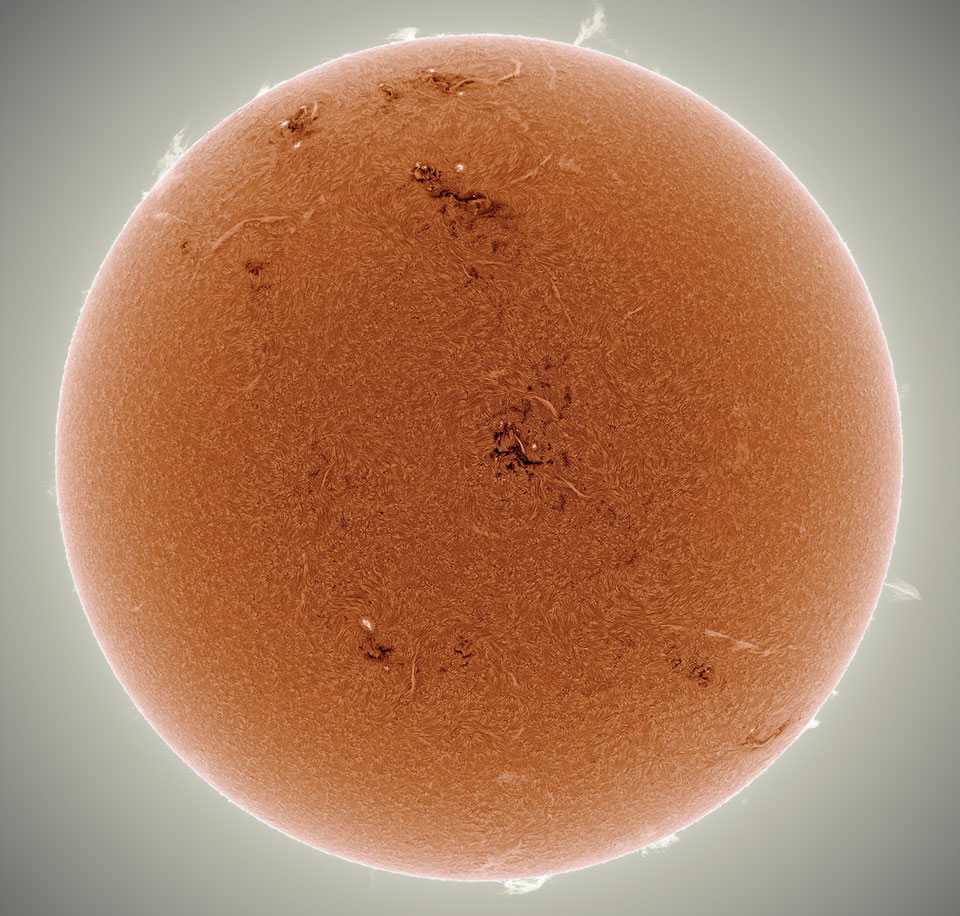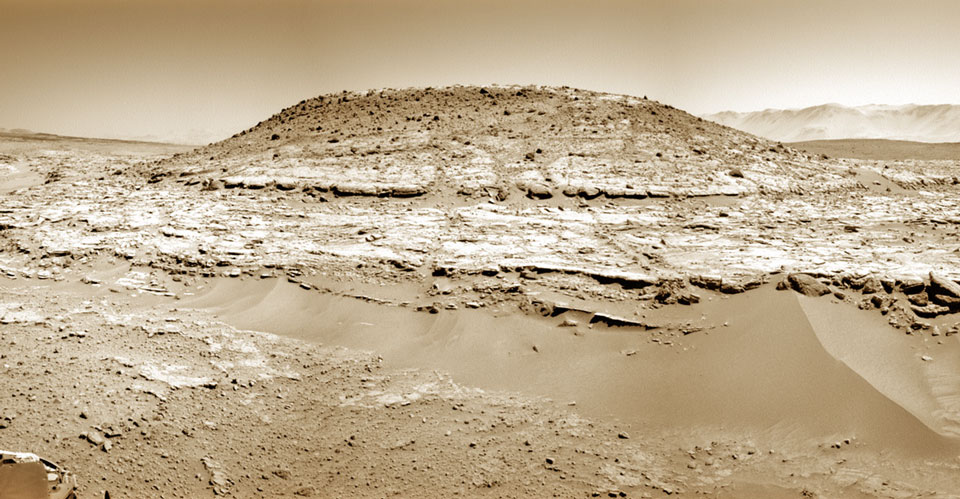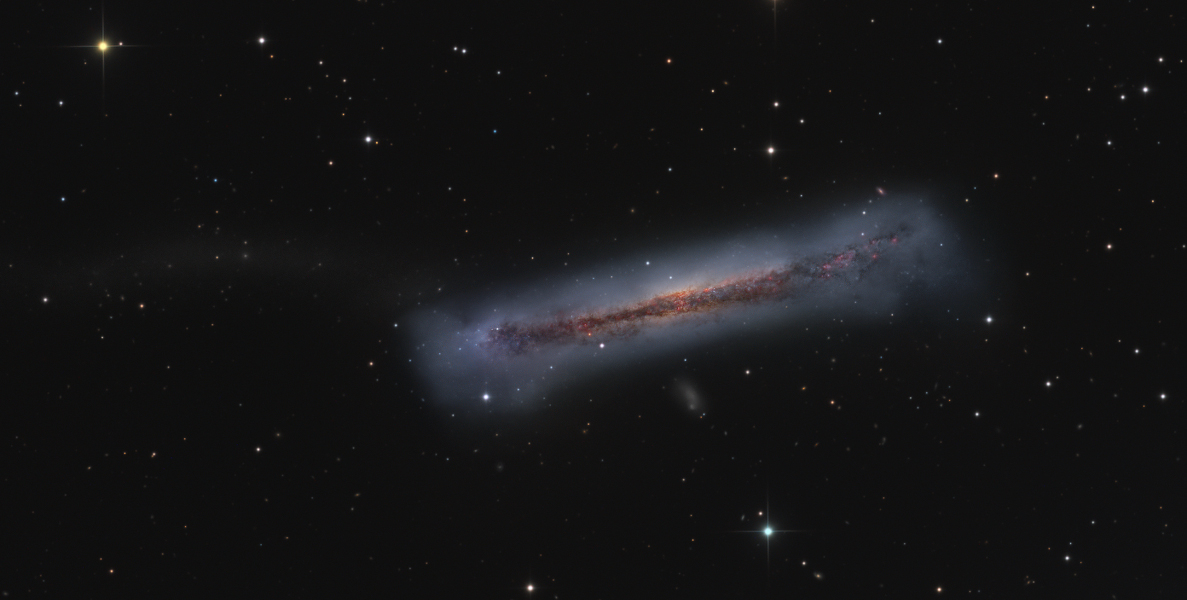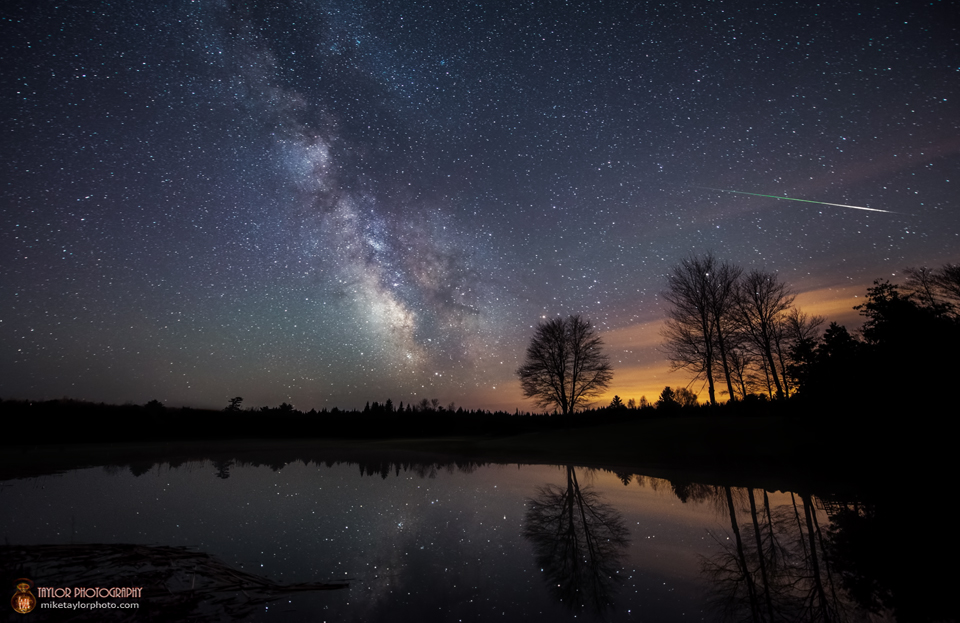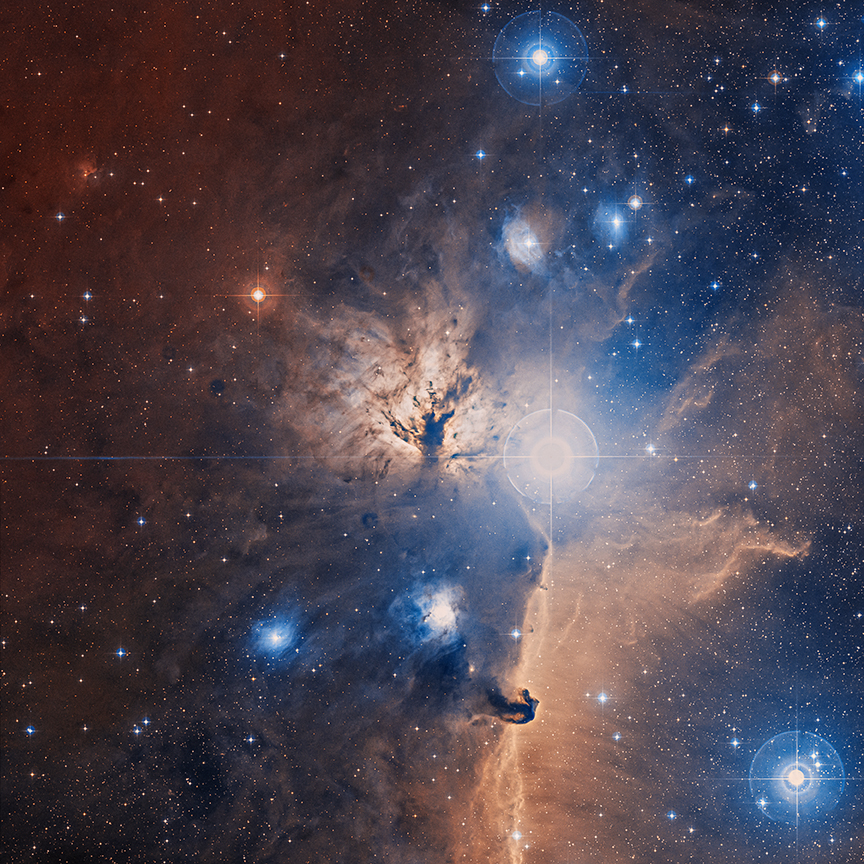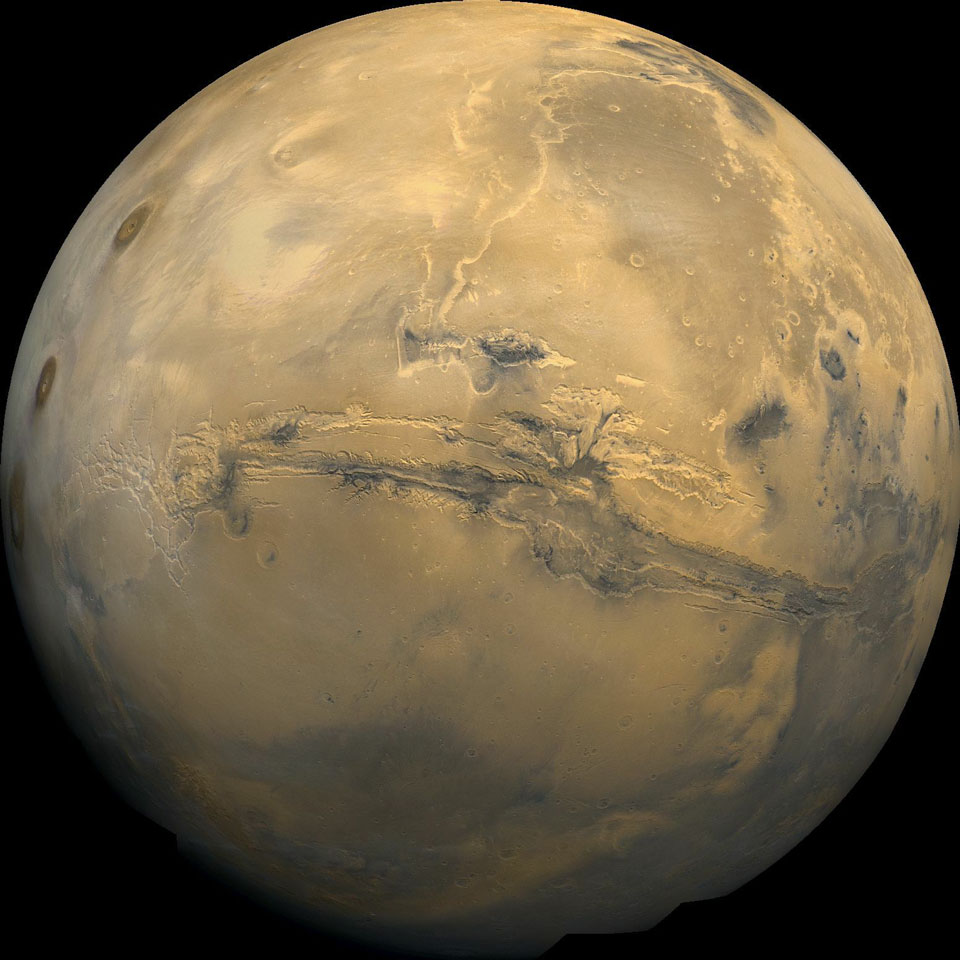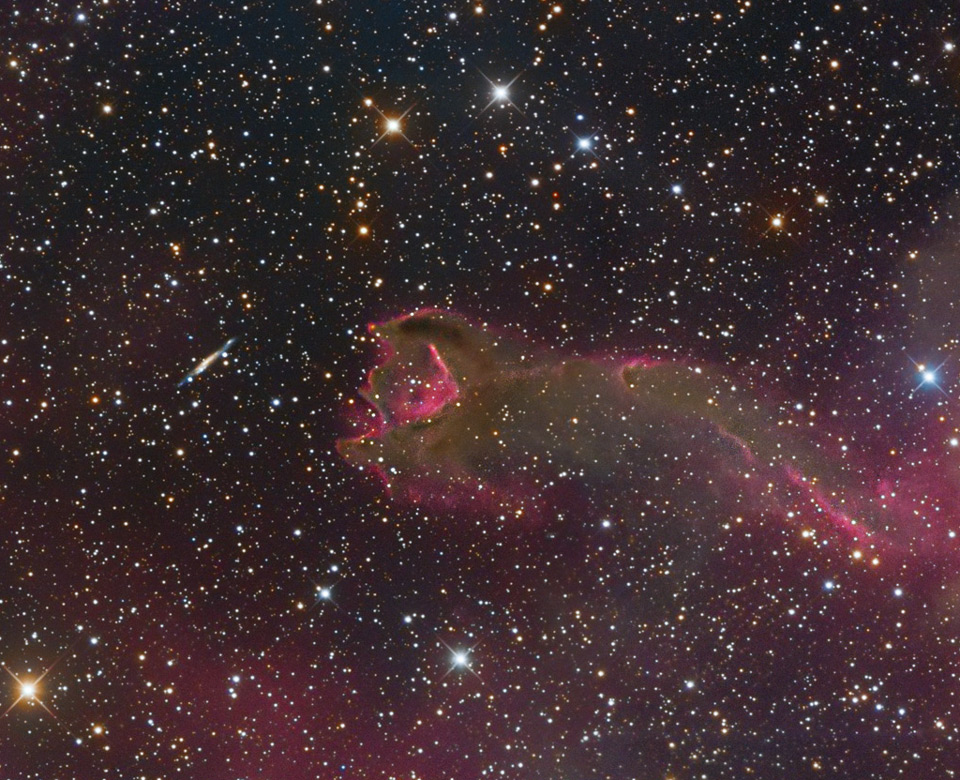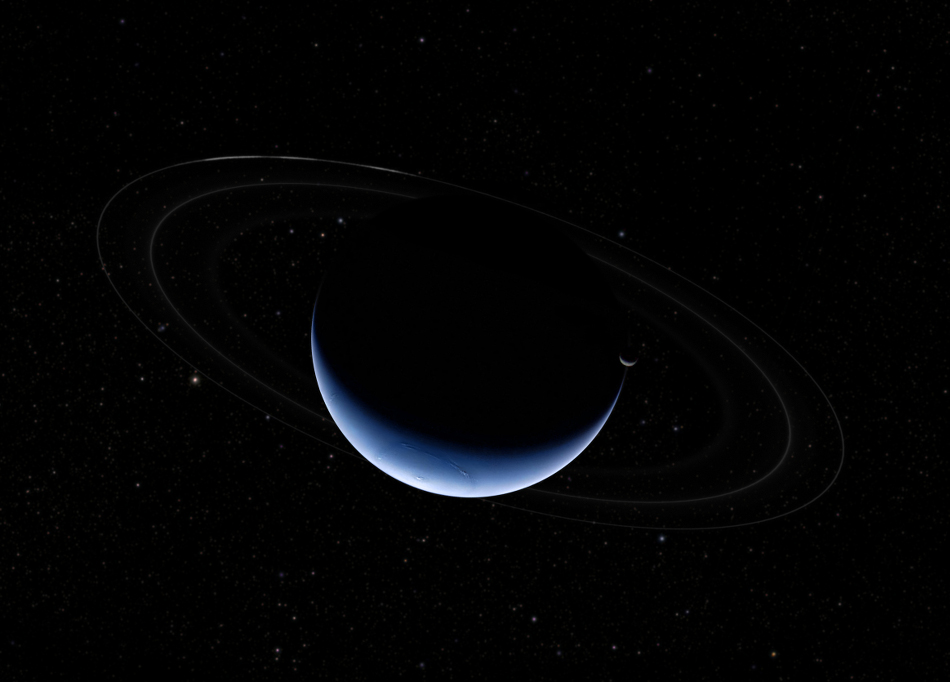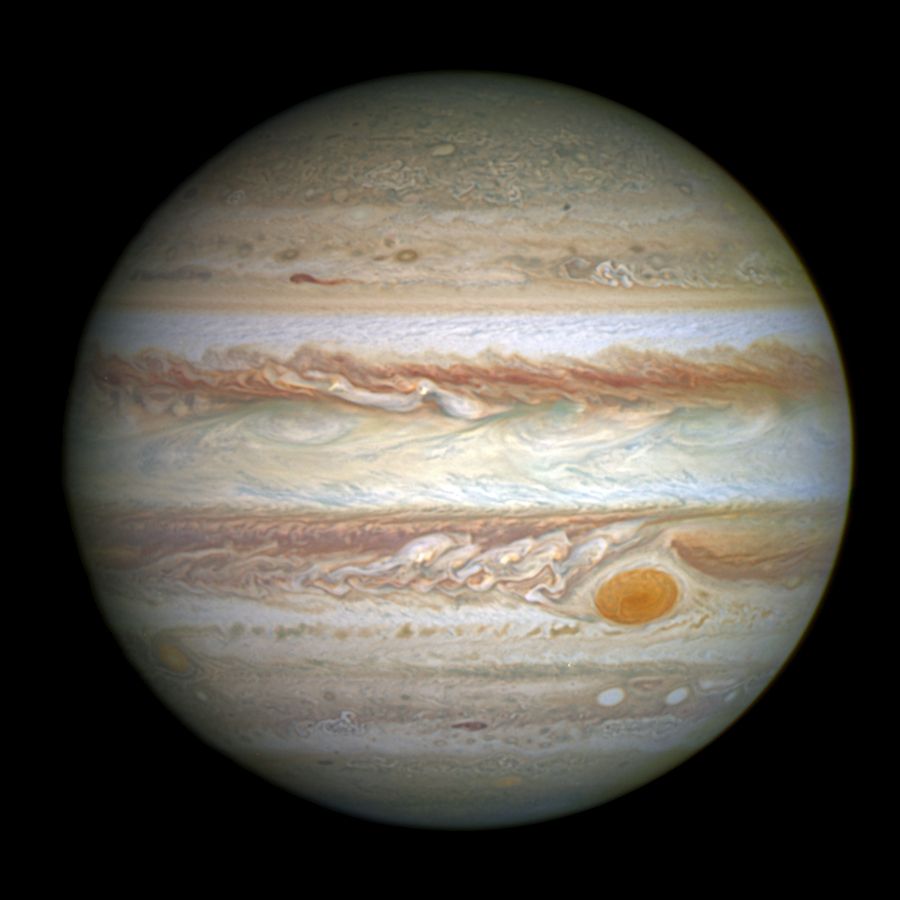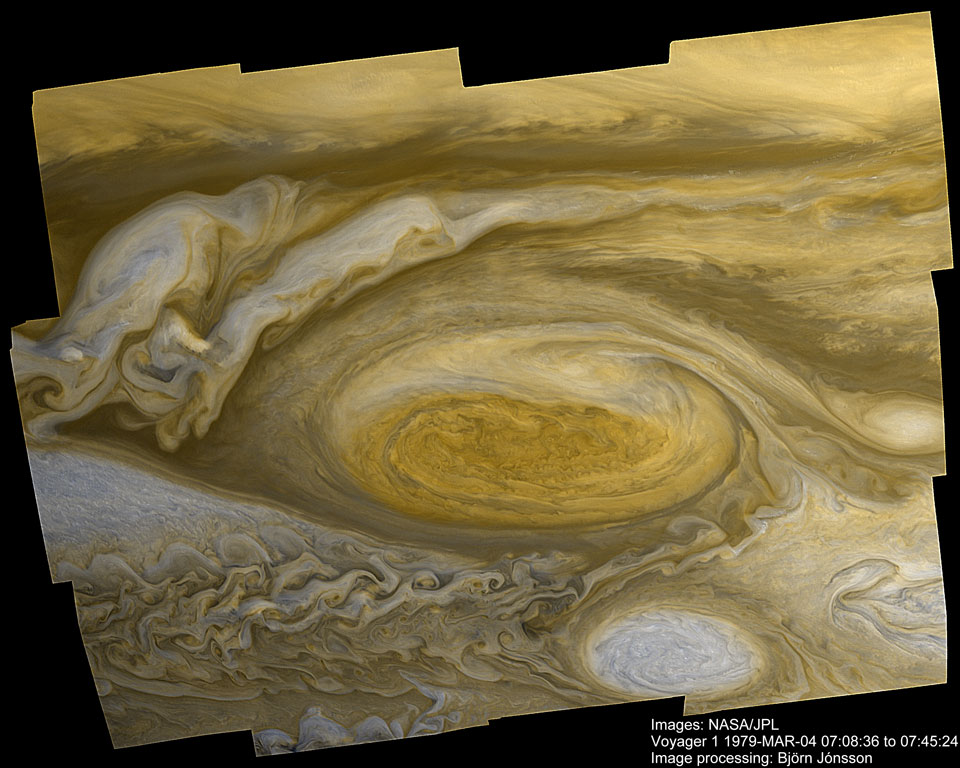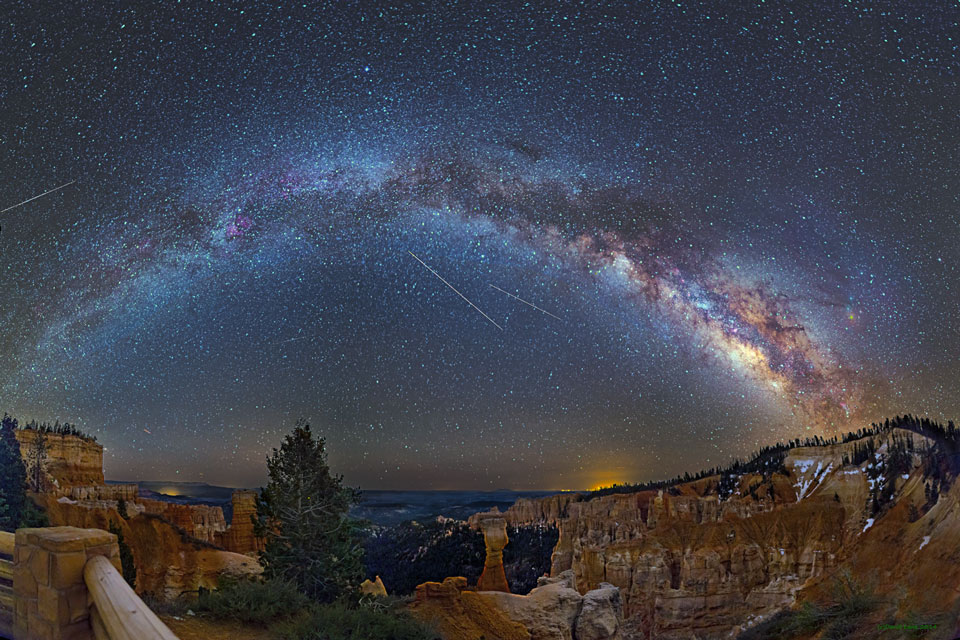
|
| Title: Astronomy Picture of the Day | |
| friendsoffortiesfive > General > General Discussion | Go to subcategory: |
| Author | Content |
|
Niceguy2
|
|
|
Date Posted:03/06/2014 11:29 PMCopy HTML I really love this site and |
|
|
Niceguy2
|
#101 |
|
Re:Astronomy Picture of the Day Date Posted:05/05/2014 12:42 AMCopy HTML Image Credit & Copyright: Stephen Mudge Explanation: In skies over Brisbane at the southeastern corner of Queensland, Australia, Planet Earth, the Sun and New Moon set together on April 29. There the celestial line-up, the first solar eclipse of 2014, was seen as a partial solar eclipse. This dramatic composite is a digital stack of images taken about 5 minutes apart with telephoto lens and solar filter. It follows the eclipse in progress, approaching a western horizon where crepuscular rays from cloud banks in silhouette joined the silhouetted Moon. From Brisbane, the maximum eclipse phase with the Moon covering about 25% of the Sun occurred just after sunset. Only from a remote spot on the continent of Antarctica was it even possible to see the eclipse in its brief annular phase, the entire dark lunar disk surrounded by a thin, bright ring of fire. |
|
|
Niceguy2
|
#102 |
|
Re:Astronomy Picture of the Day Date Posted:05/05/2014 12:46 AMCopy HTML Image Credit & Copyright: Rogelio Bernal Andreo (Deep Sky Colors) Explanation: Captured one night last May this eight frame mosaic starts on the left, down Northside Drive through Yosemite National Park. It ends thousands of light-years away though, as the arc of the Milky Way tracks toward the center of our galaxy on the right, far beyond the park's rugged skyline. That night was still moonless when the storm clouds retreated, so the rocky faces of the surrounding mountains are lit by campfires and artifical lights. Yosemite Falls is at the left. The granite face of Half Dome juts above the far horizon, near the center of the view. The remarkable flash above it is a bright meteor. Part of the annual Eta Aquarid meteor shower the colorful streak is moving up, its trail pointing directly back to the shower's radiant, low in Aquarius. This year's Eta Aquarids should peak in the moonless early morning hours of May 6 as the Earth sweeps through dust from the tail of Comet Halley. |
|
|
Niceguy2
|
#103 |
|
Re:Astronomy Picture of the Day Date Posted:05/05/2014 12:48 AMCopy HTML Image Credit & Copyright: Bill Snyder (at Sierra Remote Observatories) Explanation: The yellowish star near center in this dusty telescopic skyview is T Tauri, prototype of the class of T Tauri variable stars. Just next door is the yellow cosmic cloud historically known as Hind's Variable Nebula (NGC 1555). Over 400 light-years away, at the edge of an otherwise invisible molecular cloud, both star and nebula are seen to vary significantly in brightness but not necessarily at the same time, adding to the mystery of the intriguing region. T Tauri stars are now generally recognized as young (less than a few million years old), sun-like stars still in the early stages of formation. To furthercomplicate the picture, infrared observations indicate that T Tauri itself is part of a multiple system and suggest that the associated Hind's Nebula may also contain a very young stellar object. The naturally colored image spans about 7 light-years at the estimated distance of T Tauri. |
|
|
Niceguy2
|
#104 |
|
Re:Astronomy Picture of the Day Date Posted:05/05/2014 12:51 AMCopy HTML Image Credit & Copyright: Stéphane Guisard, TWAN Explanation: If Scorpius looked this good to the unaided eye, humans might remember it better. Scorpius more typically appears as a few bright stars in a well-known but rarely pointed out zodiacalconstellation. To get a spectacular image like this, though, one needs a good camera, color filters, and a digital image processor. To bring out detail, the above image not only involved long duration exposures taken in several colors, but one exposure in a very specific red color emitted by hydrogen. The resulting image shows many breathtaking features. Vertically across the image left is part of the plane of ourMilky Way Galaxy. Visible there are vast clouds of bright stars and long filaments of dark dust. Jutting out diagonally from the Milky Way in the image center are dark dust bands known as the Dark River. This river connects to several bright stars on the right that are part of Scorpius' head and claws, and include the bright star Antares. Above and right of Antares is an even brighter planet Jupiter. Numerous redemission nebulas and blue reflection nebulas are visible throughout the image. Scorpius appears prominently in southern skies after sunset during the middle of the year. |
|
|
tamarafromTX
|
#105 |
|
Re:Astronomy Picture of the Day Date Posted:05/05/2014 2:29 AMCopy HTML  |
|
|
Niceguy2
|
#106 |
|
Re:Astronomy Picture of the Day Date Posted:05/06/2014 12:26 AMCopy HTML Image Credit: NASA, ESA, C. McCully (Rutgers U.) et al. Explanation: How do you calibrate a huge gravitational lens? In this case the lens is the galaxy cluster Abell 383, a massive conglomeration of galaxies, hot gas, and dark matter that lies about 2.5 billion light years away (redshift z=0.187). What needs calibrating is the mass of the cluster, in particular the amount and distribution of dark matter. A new calibration technique has been tested recently that consists of waiting for supernovas of a very specific type to occur behind a galaxy cluster, and then figuring out how much the cluster must have magnified these supernovas through gravitational lensing. This technique complements other measures including computing the dark matter needed to contain internal galaxy motions, to confine cluster hot gas, and to create the gravitational lens image distortions. Pictured abovefrom the Hubble Space Telescope, galaxy cluster A383 shows its gravitational lens capabilities on the right by highly distorting background galaxies behind the cluster center. On the left is a distant galaxy shown both before and after a recent revealing supernova. To date, calibration-quality supernovas of Type Ia have been found behind two other galaxy clusters by the Cluster Lensing And Supernova survey with Hubble (CLASH) project. |
|
|
tamarafromTX
|
#107 |
|
Re:Astronomy Picture of the Day Date Posted:05/06/2014 4:03 AMCopy HTML  |
|
|
Niceguy2
|
#108 |
|
Re:Astronomy Picture of the Day Date Posted:05/07/2014 12:18 AMCopy HTML Image Credit & Copyright: Alan Friedman (Averted Imagination) Explanation: Our Sun has become quite a busy place. Taken only two weeks ago, the Sun was captured sporting numerous tumultuous regions including active sunspot regions AR 2036 near the image top and AR 2038 near the center. Only four years ago the Sun was emerging from an unusually quiet Solar Minimum that had lasted for years. The above image was recorded in a single color of light calledHydrogen Alpha, inverted, and false colored. Spicules cover much of the Sun's face like a carpet. The gradual brightening towards the Sun's edges is caused by increased absorption of relatively cool solar gas and called limb darkening. Just over the Sun's edges, several filamentary prominences protrude, while prominences on the Sun's face are seen as light streaks. Possibly the most visually interesting of all are the magnetically tangled active regions containing relatively cool sunspots, seen as white dots. Currently at Solar Maximum -- the most active phase in its 11-year magnetic cycle, the Sun's twisted magnetic field is creating numerous solar "sparks" which include eruptive solar prominences, coronal mass ejections, and flares which emit clouds of particles that may impact the Earth and cause auroras. One flare two years ago released such a torrent of charged particles into the Solar System that it might have disrupted satellites and compromised power grids had it struck planet Earth. |
|
|
Janner_Baker
|
#109 |
|
Re:Astronomy Picture of the Day Date Posted:05/07/2014 8:33 PMCopy HTML  
|
|
|
Niceguy2
|
#110 |
|
Re:Astronomy Picture of the Day Date Posted:05/07/2014 11:34 PMCopy HTML 2014 May 7
Image Credit: NASA, JPL-Caltech; Additional Mosaic Processing: Kenneth Kremer & Marco Di Lorenzo Explanation: What has the Curiosity rover come across on Mars? Dubbed Mount Remarkable, the rolling robot has chanced upon this notable 5-meter tall mound during its continuing journey around and, eventually, up 5.5-kilometer high Mt. Sharp. Unsure of the density of the surrounding layered sandstone, the human team on Earth has instructed the car-sized rover on Mars to drill into a rock on the side of |
|
|
Niceguy2
|
#111 |
|
Re:Astronomy Picture of the Day Date Posted:05/09/2014 11:25 PMCopy HTML Image Credit & Copyright: Martin Pugh Explanation: Sharp telescopic views of NGC 3628 show a puffy galactic disk divided by dark dust lanes. Of course, this deep portrait of the magnificent, edge-on spiral galaxy puts some astronomers in mind of its popular moniker, the Hamburger Galaxy. It also reveals a small galaxy nearby, likely a satellite of NGC 3628, and a faint but extensive tidal tail. The tantalizing island universe itself is about 100,000 light-years across and 35 million light-years away in the northern springtime constellation Leo. Its drawn out tail stretches for about 300,000 light-years, even beyond the left edge of the wide frame. NGC 3628 shares its neighborhood in the local Universe with two other large spirals M65 and M66 in a grouping otherwise known as the Leo Triplet. Gravitational interactions with its cosmic neighbors are likely responsible for creating the tidal tail, as well as the extended flare and warp of this spiral's disk. |
|
|
Niceguy2
|
#112 |
|
Re:Astronomy Picture of the Day Date Posted:05/09/2014 11:26 PMCopy HTML Image Credit & Copyright: Mike Taylor Explanation: The early morning hours of May 6 were moonless when grains of cosmic dust streaked through dark skies. Swept up as planet Earth plows through dusty debris streams left behind periodic Comet Halley, the annual meteor shower is known as the Eta Aquarids. This inspired exposure captures a meteor streak moving left to right through the frame. Its trail points back across the arc of the Milky Way to the shower's radiant above the local horizon in the constellation Aquarius. Known for speed Eta Aquarid meteors move fast, entering the atmosphere at about 66 kilometers per second. Still waters of the small pond near Albion, Maine, USA reflect the starry scene and the orange glow of nearby artificial lights scattered by a low cloud bank. Of course, northern hemisphere skygazers are expecting a new meteor shower on May 24, the Camelopardalids, caused by dust from periodic comet 209P/LINEAR. |
|
|
Niceguy2
|
#113 |
|
Re:Astronomy Picture of the Day Date Posted:05/10/2014 6:02 PMCopy HTML Image Credit: Optical: DSS; Infrared: NASA/JPL-Caltech; X-ray: NASA/CXC/PSU/ K.Getman, E.Feigelson, M.Kuhn & the MYStIX team Explanation: The Flame Nebula stands out in this optical image of the dusty, crowded star forming regions toward Orion's belt, a mere 1,400 light-years away. X-ray data from the Chandra Observatory and infrared images from the Spitzer Space Telescope can take you inside the glowing gas and obscuring dust clouds though. Swiping your cursor (or clicking the image) will reveal many stars of the recently formed, embedded cluster NGC 2024, ranging in age from 200,000 years to 1.5 million years young. The X-ray/infrared composite image overlay spans about 15 light-years across the Flame's center. The X-ray/infrared data also indicate that the youngest stars are concentrated near the middle of the cluster. That's the opposite of the simplest models of star formation for the stellar nursery. They predict star formation to begin first in the denser center and progressively move outward toward the edges leaving the older stars, not the younger ones, in the center of the Flame Nebula. |
|
|
tamarafromTX
|
#114 |
|
Re:Astronomy Picture of the Day Date Posted:05/10/2014 8:23 PMCopy HTML |
|
|
Niceguy2
|
#115 |
|
Re:Astronomy Picture of the Day Date Posted:05/11/2014 7:41 PMCopy HTML Image Credit: Viking Project, USGS, NASA Explanation: The largest canyon in the Solar System cuts a wide swath across the face of Mars. Named Valles Marineris, the grand valley extends over 3,000 kilometers long, spans as much as 600 kilometers across, and delves as much as 8 kilometers deep. By comparison, the Earth's Grand Canyon in Arizona, USA is 800 kilometers long, 30 kilometers across, and 1.8 kilometers deep. The origin of the Valles Marineris remains unknown, although a leading hypothesis holds that it started as a crack billions of years ago as the planet cooled. Several geologic processes have been identified in the canyon. The above mosaic was created from over 100 images of Mars taken by Viking Orbiters in the 1970s. |
|
|
Niceguy2
|
#116 |
|
Re:Astronomy Picture of the Day Date Posted:05/12/2014 9:10 PMCopy HTML 2014 May 12<iframe width="960" height="540" src="//www.youtube.com/embed/QSivvdIyeG4" frameborder="0" allowfullscreen=""></iframe> Explanation: How did we get here? Click play, sit back, and watch. A new computer simulation of the evolution of the universe -- the largest and most sophisticated yet produced -- provides new insight into how galaxies formed and new perspectives into humanity's place in the universe. The Illustris project -- the largest of its type yet -- exhausted 20 million CPU hours following 12 billion resolution elements spanning a cube 35 million light years on a side as it evolved over 13 billion years. The simulation is the first to track matter into the formation of a wide variety of galaxy types. As the virtual universe evolves, some of the matter expanding with the universe soon gravitationally condenses to form filaments, galaxies, and clusters of galaxies. The above video takes the perspective of a virtual camera circling part of this changing universe, first showing the evolution of dark matter, then hydrogen gas coded by temperature (0:45), then heavy elements such as helium and carbon (1:30), and then back to dark matter (2:07). On the lower left the time since the Big Bang is listed, while on the lower right the type of matter being shown is listed. Explosions (0:50) depict galaxy-center supermassive black holes expelling bubbles of hot gas. Interesting discrepancies between Illustris and the real universe do exist and are being studied, including why the simulation produces an overabundance of old stars. |
|
|
Niceguy2
|
#117 |
|
Re:Astronomy Picture of the Day Date Posted:05/13/2014 9:38 PMCopy HTML Image Credit & Copyright: Jason Jennings (cosmicphotos) Explanation: Can a gas cloud grab a galaxy? It's not even close. The "claw" of this odd looking "creature" in the above photo is a gas cloud known as a cometary globule. This globule, however, has ruptured. Cometary globules are typically characterized by dusty heads and elongated tails. These features cause cometary globules to have visual similarities to comets, but in reality they are very much different. Globules are frequently the birthplaces of stars, and many show very young stars in their heads. The reason for the rupture in the head of this object is not completely known. The galaxy to the left of the globule is huge, very far in the distance, and only placed near CG4 by chance superposition. |
|
|
Niceguy2
|
#118 |
|
Re:Astronomy Picture of the Day Date Posted:05/14/2014 8:49 PMCopy HTML 2014 May 14 http://apod.nasa.gov/apod/astropix.html Credit: NASA, UStream, HDEV Project Explanation: If you were floating above the Earth right now, this is what you might see. Two weeks ago, the robotic SpaceX Dragon capsule that delivered supplies to the Earth-orbiting International Space Station (ISS) also delivered High Definition Earth Viewing (HDEV) cameras that take and transmit live views of Earth. Pictured above, when working, is the live video feed that switches between four cameras, each pointed differently. Watch white clouds, tan land, and blue oceans drift by. The above video will appear black when it is nighttime on the Earth below, but the space station's rapid 90-minute orbit compresses this dark time into only 45 minutes. The present location of the ISS above the Earth can be found on the web. If the video appears gray, this indicates that the view is either being switched between cameras, or communications with the ISS is temporarily unavailable. As the HDEV project continues, video quality will be monitored to assess the effects of high energy radiation, which types of cameras work best, and which Earth views are the most popular. Although this feed will eventually be terminated, lessons learned will enable better cameras to be deployed to the ISS in the future, likely returning even more interesting live feeds. |
|
|
tamarafromTX
|
#119 |
|
Re:Astronomy Picture of the Day Date Posted:05/14/2014 9:30 PMCopy HTML  |
|
|
Niceguy2
|
#120 |
|
Re:Astronomy Picture of the Day Date Posted:05/15/2014 9:48 PMCopy HTML Composite Image Credit & Copyright: Assembly/Processing - Rolf Olsen, Data - Voyager 2, NASA Planetary Data System Explanation: Cruising through the outer solar system, the Voyager 2 spacecraft made its closest approach to Neptune on August 25, 1989, the only spacecraft to visit the most distant gas giant. Based on the images recorded during its close encounter and in the following days, this inspired composited scene covers the dim outer planet, largest moon Triton, and faint system of rings. From just beyond Neptune's orbit, the interplanetary perspective looks back toward the Sun, capturing the planet and Triton as thin sunlit crescents. Cirrus clouds and a dark band circle Neptune's south polar region, with a cloudy vortex above the pole itself. Parts of the very faint ring system along with the three bright ring arcs were first imaged by Voyager during the fly-by, though the faintest segments are modeled in this composited picture. Spanning 7.5 degrees, the background starfield is composed from sky survey data centered on the constellation Camelopardalis, corresponding to the outbound Voyager's view of the magnificent Neptunian system. |
|
|
Niceguy2
|
#121 |
|
Re:Astronomy Picture of the Day Date Posted:05/16/2014 9:58 PMCopy HTML Image Credit: NASA/JPL/Cornell/ASU/TAMU Explanation: Staring up into the martian sky, the Opportunity rover captured an image at 11:02 AM local mean time nearly every 3rd sol, or martian day, for 1 martian year. Of course, the result is thismartian analemma, a curve tracing the Sun's motion through the sky in the course of a year (668 sols) on the Red Planet. Spanning Earth dates from July, 16, 2006 to June 2, 2008 the images are shown composited in this zenith-centered, fisheye projection. North is at the top surrounded by a panoramic sky and landscape made in late 2007 from inside Victoria crater. The tinted martian sky is blacked out around the analemma images to clearly show the Sun's positions. Unlike Earth's figure-8-shaped analemma, Mars' analemma is pear-shaped, because of its similar axial tilt but more elliptical orbit. When Mars is farther from the Sun, the Sun progresses slowly in the martian sky creating the pointy top of the curve. When close to the Sun and moving quickly, the apparent solar motion is stretched into the rounded bottom. For several sols some of the frames are missing due to rover operations and dust storms. |
|
|
Niceguy2
|
#122 |
|
Re:Astronomy Picture of the Day Date Posted:05/17/2014 9:24 PMCopy HTML Credit: NASA, ESA, and Amy Simon (Goddard Space Flight Center) et al. Explanation: Gas giant Jupiter is the solar system's largest world with about 320 times the mass of planet Earth. It's also known for a giant swirling storm system, the Great Red Spot, featured in this sharp Hubble image from April 21. Nestled between Jupiter-girdling cloud bands, the Great Red Spot itself could still easily swallow Earth, but lately it has been shrinking. The most recent Hubble observationsmeasure the spot to be about 10,250 miles (16,500 kilometers) across. That's the smallest ever measured by Hubble and particularly dramatic when compared to 14,500 miles measured by the Voyager 1and 2 flybys in 1979, and historic telescopic observations from the 1800s indicating a width of about 25,500 miles on its long axis. Current indications are that the rate of shrinking is increasing for the long-lived Great Red Spot. |
|
|
Niceguy2
|
#123 |
|
Re:Astronomy Picture of the Day Date Posted:05/18/2014 7:44 PMCopy HTML Image Credit: NASA, JPL; Digital processing: Björn Jónsson (IAAA) Explanation: What will become of Jupiter's Great Red Spot? Recorded as shrinking since the 1930s, the rate of the Great Red Spot's size appears to have accelerated just in the past few years. A hurricane larger than Earth, the Great Red Spot has been raging at least as long as telescopes could see it. Like most astronomical phenomena, the Great Red Spot was neither predicted nor immediately understood after its discovery. Although small eddies that feed into the storm system seem to play a role, a more full understanding of the gigantic storm cloud remains a topic of continued research, and may result in a better understanding of weather here on Earth. The above image is a digital enhancement of an image of Jupiter taken in 1979 by the Voyager 1 spacecraft as it zoomed by the Solar System's largest planet. NASA's Juno spacecraft is currently heading toward Jupiter and will arrive in 2016. |
|
|
ravch641943
|
#124 |
|
Re:Astronomy Picture of the Day Date Posted:05/19/2014 1:37 PMCopy HTML |
|
|
Niceguy2
|
#125 |
|
Re:Astronomy Picture of the Day Date Posted:05/19/2014 9:11 PMCopy HTML Image Credit & Copyright: Dave Lane Explanation: Sometimes land and sky are both busy and beautiful. The landscape pictured in the foreground encompasses Bryce Canyon in Utah, USA, famous for its many interesting rock structures eroded over millions of years. The skyscape above, photogenic in its own right, encompasses the arching central disk of our Milky Way Galaxy, streaks that include three passing airplanes and at least four Eta Aquariid meteors, and bright stars that include the Summer Triangle. The above image is a digital panorama created from 12 smaller images earlier this month on the night May 6. If you missed the recent Eta Aquariids meteor shower though, don't fret -- you may get an unexpected reprieve. Sky enthusiasts are waiting to see if a new meteor shower develops in the early morning hours of Saturday, May 24, when the Earth moves through a possibly dense cloud of dust and debris ejected by Comet 209P/LINEAR. |







